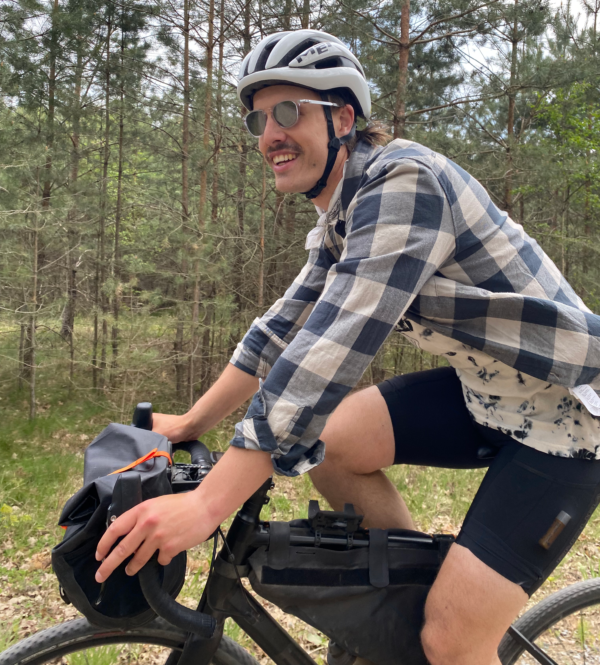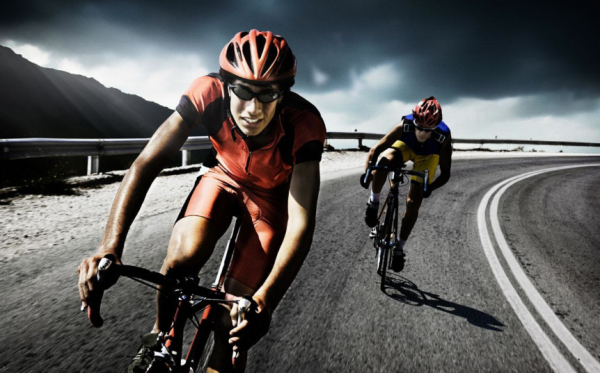The Basics
To get better at cycling, you’re going to have to spend a lot of time on your bike. Training for endurance cycling is, in some sense, a simple endeavour. We just have to create the infrastructure that can perform for long periods of time at a given intensity. This is what many people refer to as: Building your aerobic base.

Source: Lassedesignen/Adobe Stock
Building up a large aerobic base is the foundation that will support you through long, gritty rides on the roads and trails. By cycling at a low, sustainable RPM for extended sessions (on a consistent basis) your body will begin to make adaptations because of the demands you’re placing on it.
Being able to produce and utilize the adequate energy, while also effectively removing the byproducts of that energy production (lactic acid), would mean you’d be able to ride longer, harder and faster over greater distances for extended periods of time, just like professional cyclists.
A more comprehensive and robust capillary network will begin to form, and this will serve to supply more oxygen and nutrients to the working muscles. Further, it will increase the production of mitochondria, which can be thought of as the power plants of your muscle cells. These mechanisms combined create an efficient energy production and waste removal system.
Source: Shutter2U/Adobe Stock
What Allows Us To Train For Endurance Cycling?
This is actually the first question we should be asking. Endurance training can be brutal and exhausting, yet we are often so concerned with the various training methods and desired outcomes that we forget to ask ourselves, “Am I ready to train today?”
The truth is that most people have not properly prepared for the training they put themselves through, evidenced by the high percentage of pain and subsequent injuries (non-traumatic) reported in the average cyclist. This could be due to a number of factors, all of which significantly contribute to an individual’s general health and well-being.
It will ultimately be a willingness to consider the various parts of our lives, health and bodies in combination with one other that determines how long we stay on the saddle, and how well we perform during that time. Despite the tried and true training protocols for endurance cycling, if we can’t ride due to injury or fatigue, none of them will matter.
How To Become A Better Endurance Cyclist
Here are three tips that will ensure you get the most out of your long distance training. By following this advice, you will also be mitigating your injury risk and working towards a sustainable, long term cycling practice that you can continue to do for the rest of your life. Staying on the bike and riding pain free should always be the number one goal.
Monitor Your Resting Heart Rate (RHR)
Source: Marcos Paulo Prado/Unsplash
This can be done in a number of ways with all sorts of fancy tools and gadgets, but there’s also a simpler method that costs no money and actually does more in the way of connecting you with your own body. That is by manually checking your pulse as soon as you wake up, and tracking your beats per minute in a simple journal or by creating a new column in your training log.
Studies have shown that an elevated RHR of just five extra beats per minute is strongly associated with overtraining. You’ll notice the same effect when you get sick, are having a troublesome time at work, have been making poor food choices – and the list goes on and on. All of these things are associated with a person being under increased levels of stress.
Whatever the reason, it can be taken as a sign that today might not be a great day to try and push yourself. Today might be a day for rest and relaxation. Rome wasn’t built in a day, and you’re not going to become an elite endurance cyclist in one either. Taking the time to focus on recovery could be the best option when this simple metric starts to stand out.
Follow The 80/20 Rule
Source: .shock/Adobe Stock
The 80/20 rule, also known as the Pareto Distribution, basically states that 80% of outcomes are due to 20% of causes. It is quite a miraculous phenomenon that is rampantly prevalent in human activity and nature too. Surely our meager cycling endurance training can’t escape something so fundamental. Perhaps it means we don’t have to work quite as hard as we think, either.
Adapting the 80/20 rule to endurance cycling would involve deciding what amount of time to spend between low intensity and high intensity training. As mentioned in our introduction, it is important to spend the majority of it (80%, perhaps?) building a large aerobic base. That leaves 20% for us to dedicate to higher intensity training like hill, sprint and interval workouts.
Having a training plan makes a ratio like this easy to track, but even a loose adherence to this guideline will start to provide significant returns on your training investments over time. A great way to start is if you ride five days a week, commit one of those days to a workout that really pushes you, saving the others for longer, more manageable rides.
Start A Strength & Mobility Program
Source: Ayo Ogunseinde/Unsplash
Cycling positions can be tough on the body, and if the plan is to stay in those positions for longer stretches of time over greater distances, that means the chances of injury are going to increase as well. Incorporating a properly programmed and professionally designed strength and mobility program can help counteract this.
Supple joints that can move through varying ranges of motion and strength training in particular have been shown to increase endurance cycling performance. By increasing the cross sectional area of the muscles used while cycling, they’re able to produce more force over longer periods of time, and their fibers become more resistant to pulls, strains and tears.
Dynamic Cyclist is our recommended choice for an all-inclusive program that is accessible 24/7 through an easy-to-use online training platform. It has follow along strength training, warm up and mobility routines to help you optimize your cycling performance, reduce pain and stay injury free before, during and after your time on the bike.
Deciding what to do and at what time can be challenging with all of the conflicting information available online. Dynamic Cyclist gives our readers a personal trainer, physiotherapist and professional cycling coach all combined into one low-cost option that they can try here for FREE.
No matter what your end goal is with endurance training, be sure to look after yourself, make sure you’re prepared, and do the necessary work that is going to keep you riding for years to come!

 So you want to tackle cycling 100 miles (also known as a century)!
So you want to tackle cycling 100 miles (also known as a century)!